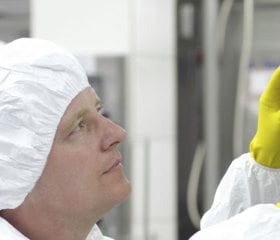 Asking ‘why?’ about incidents several times and answering, ‘because … ’, inevitably leads to the answer, ‘culture’—the climate of practices, values, accountability and communications pervading in an organisation, summed up in the phrase, ‘the way we do things around here’.
Asking ‘why?’ about incidents several times and answering, ‘because … ’, inevitably leads to the answer, ‘culture’—the climate of practices, values, accountability and communications pervading in an organisation, summed up in the phrase, ‘the way we do things around here’.
The relationship between culture and safety came into focus as a field of study after the Chernobyl nuclear disaster of 1986. The International Nuclear Safety Group coined the term ‘safety culture’ and described it as, ‘That assembly of characteristics and attitudes in organisations and individuals which establishes that, as an overriding priority … safety issues receive the attention warranted by their significance.’
A great safety culture is when people continue to work safely and do the right things … even when no-one is watching. People in senior positions create an organisational climate which is open to criticism and encourages discussion from all employees. In the words of Sidney Dekker, Professor of Humanities and Social Science, Griffith University, safety culture is a “culture that allows the boss to hear bad news”.’
Every organisation has a culture, but not all are equally safe. Professor Patrick Hudson mapped five stages of safety culture in his analysis of the oil and gas industry. His ‘ladder’ of cultures is applicable to many industries, where examples of all five levels can be found.
- Pathological: Management believes accidents are caused by workers who are stupid, inattentive or wilfully negligent. All the messages from management have ‘be safe’ tacked on to the end of them as some kind of last line of defence. The emphasis, either implicit or explicit, is, ‘get the job done without any issues’.
- Reactive: There has been an incident and safety has suddenly become a priority. This can be a temporary stage where the organisation slips back to pathological or moves forward to calculative. Either way, it demonstrates safety is an afterthought. This lack of anticipation is commonly identified as a contributing factor during incident investigations.
- Calculative: Safety processes and systems are put into operation and people regularly ‘take a pulse’ to make sure they are continuing to happen. There are consequences if people aren’t following these processes. However, the calculative approach can be degraded into going through the motions of safety management with the emphasis on process and metrics rather than knowledge, interpretation and insight.
Researchers have discovered during their investigations into high profile incidents that many safety processes were being completed in the lead up to the incidents themselves, such as workplace inspections and audits for example. - Proactive: Teams use planning processes and systems to anticipate safety problems before they arise, and people begin to proactively manage safety issues.
- Generative: Awareness has permeated the organisation, from the boardroom to the casual contractors, and everyone thinks of safety and the work as inseparable. Hudson describes this as the lunatics running the asylum, but in the best sense.
What are the characteristics of proactive and generative safety cultures? Hudson and Reason—developer of the Swiss cheese accident causation model—describe five elements of cultures that prioritise safety:
- An informed culture—those who manage and operate the system have current knowledge about the human, technical, organisational and environmental factors underpinning the safety of the system.
- A reporting culture—people are willing and encouraged to report errors and near misses. (The boss wants the bad news too!)
- A just culture—there is an atmosphere of trust, and people are encouraged or even rewarded for providing essential safety-related information, but there is also a clear line between acceptable and unacceptable behaviour (i.e. fair and just culture. The punishment fits the crime!).
- A flexible culture—this can take different forms but is characterised as shifting from the conventional hierarchical organisational structure to a flatter professional and collegial structure. There is deference to expertise, regardless of formal position or rank. (All hands on deck!, who is the goto on this?)
- A learning culture—has the willingness and competence to draw the right conclusions from its safety information system, and the will to implement major reforms when necessary.



